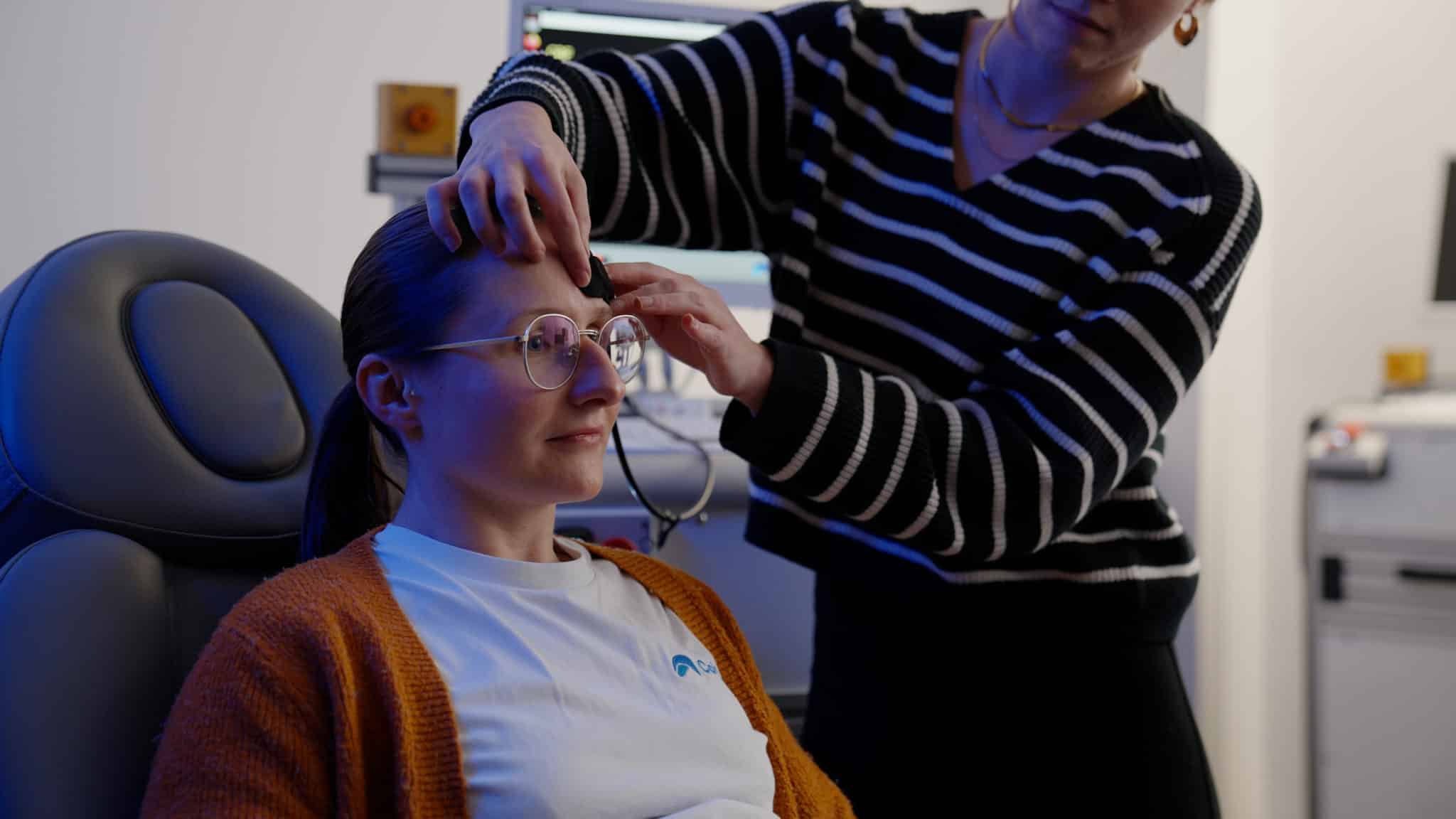The brain is our most important organ, and yet bedside monitoring of the brain remains extremely limited. Clinicians fundamentally want to understand the balance of neurophysiological supply and demand; the supply of blood flow and nutrients to the brain, and the metabolic demand of the brain.Our technology can provide doctors with a wide range of critical neurophysiological parameters in real time from a single, simple measurement.
Our approach uses safe levels of laser light transmitted through the tissues of the head, combined with an advanced interferometric optical detection architecture similar to the LiDAR technology used in autonomous vehicles.
CoMind’s technology uses light from a wavelength-modulated laser source that is split across two paths – a reference arm and a sample arm. Light from the sample arm is directed to a small, self-adhesive sensor placed on the forehead of the patient. This laser light is transmitted down into the scalp and travels harmlessly through the tissues of the head, with a proportion of this light reaching the brain before returning to the surface to be collected.
This collected light is combined with light from the reference arm to create an interference pattern. The time it has taken the collected light to travel through the tissues of the head (known as the time-of-flight) is encoded within this interference pattern [Borycki et al., 2016, Zhao et al., 2023].
This time-of-flight information is highly valuable for two reasons: 1) because light with a longer time-of-flight will have, on average, travelled deeper into the brain. CoMind’s technology therefore provides depth selectivity [Martelli et al 2018]. 2) time-of-flight information encodes the absolute optical characteristics of the measured tissues, and therefore permits measurements of parameters like brain oxygen saturation with unprecedented accuracy [Torricelli et al., 2014].
This interference pattern is measured at very high speed – many hundreds of thousands of times per second. As a result, CoMind’s approach also captures dynamic fluctuations in the collected laser light, which are driven by the flow of red blood cells within the tissue [Durduran et al., 2014].
The resulting data that CoMind’s technology generates is uniquely rich, and empowers our devices to measure a wide range of neurophysiological parameters that are either not currently available to doctors at the bedside at all, or only available through highly invasive or inaccurate means. These parameters include Cerebral Blood Flow, Intracranial Pressure, Cerebral Autoregulation, Brain Tissue Oxygen Saturation, Cerebral Metabolism, and more.
